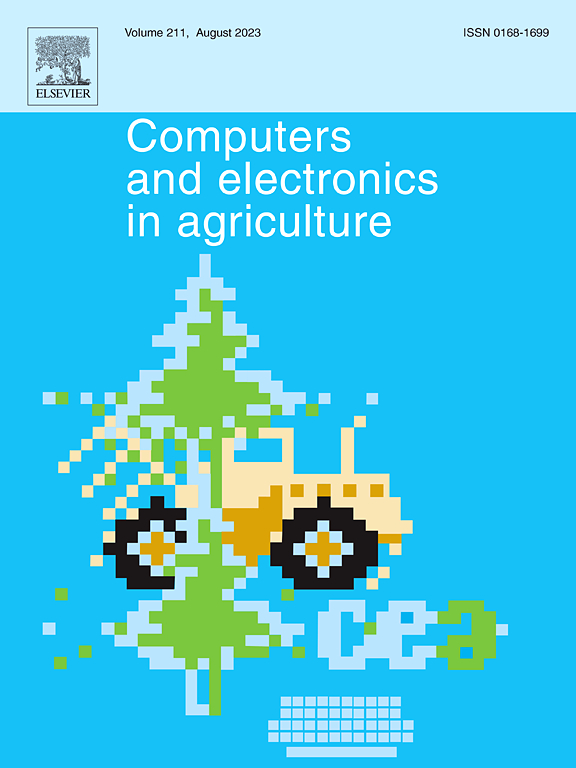重新定义跛行评估:使用众包数据构建跛行层次结构
IF 8.9
1区 农林科学
Q1 AGRICULTURE, MULTIDISCIPLINARY
引用次数: 0
摘要
跛行会给奶牛带来痛苦,给农民造成经济损失,但很难发现和常规监测。尽管许多人尝试开发自动检测方法,但很少有人成功应用于农场。可靠的自动化方法的发展可能受到缺乏大型标记训练数据集的限制,这些数据集可以捕捉农场内部和农场之间跛行病例的多样性。此外,用于训练视频注释的传统步态评分方法具有主观性和不可靠性,会给训练数据增加噪声,从而影响模型的性能。我们提出了一种新的方法来跛行评估奶牛,利用众包数据构建跛行层次使用elo评级方法。在这项使用30头奶牛视频的初步研究中,我们提出的跛行层次结构是由跛行两两评估构建的,在经验丰富的评估者中获得了很高的观察者间信度(类内相关系数(ICC) = 0.81)。相比之下,我们发现传统的主观步态评分系统不一致,观察者内部和观察者之间的ICC信度分别为0.62±0.09和0.44±0.02。我们还证明了由未经培训的评估人员(在本例中,通过Amazon MTurk招募的人群工作人员)执行两两评估的可行性,证明了由人群工作人员和有经验的评估人员产生的等级之间的高度一致性(ICC = 0.85)。我们创建了一个子采样算法,发现每个视频对只招募8个人群工作者就足以构建一个可靠的跛行层次结构。相对于评估每对奶牛之间所有可能的比较,该方法还将所需的两两比较数量减少了61%。我们得出的结论是,我们提出的跛行层次方法,使用易于接近的人群工作人员来方便快速准确地标记跛行视频,可以对跛行进行可靠和细致的评估。我们建议使用这种方法来创建适合开发鲁棒性跛行检测模型的大型训练数据集。本文章由计算机程序翻译,如有差异,请以英文原文为准。
Redefining lameness assessment: Constructing lameness hierarchy using crowd-sourced data
Lameness causes pain to dairy cows and economic losses to farmers, but can be difficult to detect and routinely monitor. Despite numerous attempts to develop automatic detection methods, few have been successfully applied on farms. The development of reliable automated methods is likely restricted by the lack of large, labeled training datasets that capture the diversity in lameness cases within and among farms. Additionally, conventional gait scoring methods employed for annotating training videos are subjective and unreliable, adding noise to training data and thus hindering model performance. We propose a novel approach to lameness assessment in dairy cows, leveraging crowd-sourced data to construct a lameness hierarchy using the Elo-rating method. In this pilot study using 30 cow videos, our proposed lameness hierarchy constructed from pairwise lameness assessments achieved high inter-observer reliability (intraclass correlation coefficient (ICC) = 0.81) among experienced assessors. In contrast, we found that the traditional, subjective gait scoring systems to be inconsistent, with intra- and inter-observer reliabilities of ICC = 0.62±0.09 and 0.44±0.02, respectively. We also demonstrated feasibility for the pairwise assessment to be executed by untrained assessors (in this case, crowd workers recruited via Amazon MTurk), evidenced by high agreement between hierarchies generated by crowd workers and experienced assessors (ICC = 0.85). We created a subsampling algorithm, and found that recruiting just 8 crowd workers per video pair was sufficient to construct a reliable lameness hierarchy. This method also decreased the number of pairwise comparisons required by 61 %, relative to evaluating all possible comparisons between every pair of cows. We conclude that our proposed lameness hierarchy method, using easily accessible crowd workers to facilitate quick and accurate labeling of lameness videos, enables a reliable and granular evaluation of lameness. We suggest that this approach be used to create large training datasets suitable for developing robust lameness detection models.
求助全文
通过发布文献求助,成功后即可免费获取论文全文。
去求助
来源期刊

Computers and Electronics in Agriculture
工程技术-计算机:跨学科应用
CiteScore
15.30
自引率
14.50%
发文量
800
审稿时长
62 days
期刊介绍:
Computers and Electronics in Agriculture provides international coverage of advancements in computer hardware, software, electronic instrumentation, and control systems applied to agricultural challenges. Encompassing agronomy, horticulture, forestry, aquaculture, and animal farming, the journal publishes original papers, reviews, and applications notes. It explores the use of computers and electronics in plant or animal agricultural production, covering topics like agricultural soils, water, pests, controlled environments, and waste. The scope extends to on-farm post-harvest operations and relevant technologies, including artificial intelligence, sensors, machine vision, robotics, networking, and simulation modeling. Its companion journal, Smart Agricultural Technology, continues the focus on smart applications in production agriculture.
 求助内容:
求助内容: 应助结果提醒方式:
应助结果提醒方式:


